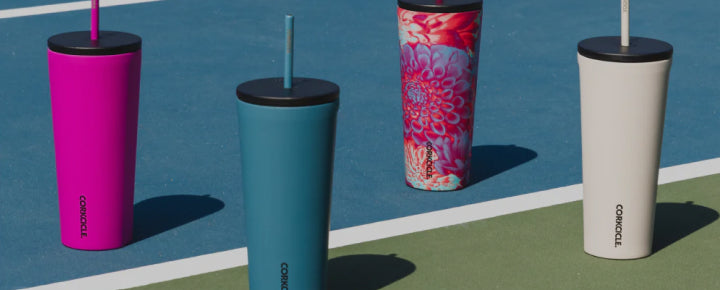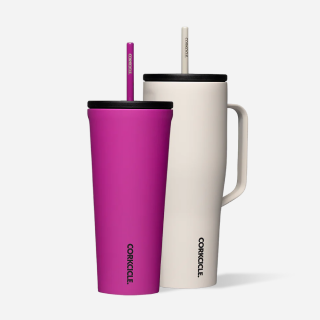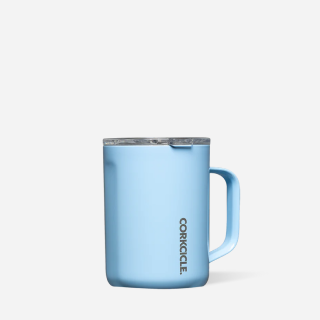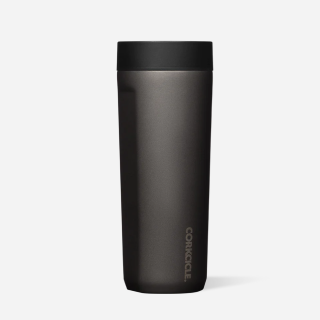As many connoisseurs know, the right glass is vital in being able to truly savor our favorite vintages. Whether you're a devoted oenophile or a lover of bubbly, understanding the distinctions between wine glasses and champagne glasses is essential to elevate your drinking experience.
So, let's pop the cork and explore the captivating realm of glassware and different types of wine glasses.
Key Differences Between Wine Glasses and Champagne Glasses
While red wine glasses, white wine glasses, and champagne flutes all serve the noble purpose of holding our favorite alcoholic drinks, they possess distinct characteristics that cater to the unique qualities of the beverages they hold.
Designed with big bowls and wide openings, wine glasses are crafted to make the most of the aromas, flavors, and overall sensory experience of wine.
Champagne glasses, on the other hand, are used specifically to highlight the effervescence and elegance of sparkling wines. The shape, rim diameter, and bowl size of each champagne flute or glass play a vital role in shaping the way we perceive and enjoy these delightful libations.
Types of Wine Glasses
Let's embark on a tantalizing journey through the realm of wine glasses. From the voluptuous curves of red wine glasses to the refined elegance of white wine glasses, each type has its own charm and purpose.
Red wine glasses, with their larger bowls and wider rims, allow the wine to breathe and fully express its complex aromas. White wine glasses, characterized by their more slender and narrower bowls, help maintain a cooler temperature and preserve the delicate aromas of white wines.
Universal wine glasses are suitable for a variety of different types of wines, and ensure that you're always prepared to savor your favorite vintages, no matter the type.
Types of Champagne Glasses
Now, let's turn our attention to the enchanting world of champagne glasses. As you raise your glass to celebrate life's special moments, the right champagne glass can enhance the sparkle and effervescence of your bubbly delight.
Champagne flutes, with their elongated shape and narrow openings, are the quintessential choice for champagne enthusiasts. Their design allows the bubbles to gracefully ascend, creating a mesmerizing visual display. Corkcicle’s Stemless Flute Glasses are one such worthy addition to any bar, as their double-wall insulated glass keeps champagne cold and sparkling for longer, with various designs to fit any theme or aesthetic.
Tulip glasses, with their wider bowls and tapered rims, strike a harmonious balance between preserving the bubbles and capturing the delicate aromas of the champagne.
And then there are the glamorous coupe glasses, reminiscent of the golden age of champagne, with their shallow, saucer-like shape that exudes elegance and sophistication.

Shop Champagne Flutes
Choosing the Right Glassware for Wine and Champagne
While it's not rocket science, choosing between a wine glass vs champagne glass is a far from easy errand. It requires an understanding of the beverage's characteristics and the impact that glass shape has on the overall drinking experience.
When choosing wine glasses, consider the type of wine you'll be indulging in. The shape of the glass can enhance or diminish the wine's aromas and flavors.
For champagne, the glass should be selected based on the desired level of effervescence and the ability to capture and deliver delicate aromas to your senses. Stemware is also a crucial consideration, as it allows you to hold the glass without affecting the temperature of the beverage. If you opt for a stemless vs a stemmed wine glass style, make sure to use an insulated stemless flute to retain the proper temperature while enjoying the stemless design.
Wine Glass and Champagne Glass Etiquette
As you raise your glass in a toast, it's essential to understand the proper etiquette associated with wine and champagne glasses.
When a glass has a stem, it is important that this is where you hold it. Apart from being more elegant, it is also meant to prevent the warmth of your hand from coming in direct contact with the glass wall and ensures that the wine remains at an ideal temperature. When it comes to champagne, etiquette extends to the preservation of effervescence.
Some people prefer the look of a stemless wine or champagne glass, which means your beverage may warm up quicker due to the heat from your hands. Fret not, stemless lovers! There are plenty of options for insulated or double-walled stemless wine glasses that offer the stemless look you love while maintaining the internal temperature of your beverage and prevent unwanted slippery condensation.
Other Frequently Asked Questions (FAQs)
We understand that there are more questions surrounding wine glasses and champagne glasses. To address your inquiries directly, we've compiled a list of frequently asked questions related to these captivating vessels.
1. What is the purpose of the stem on a wine or champagne glass?
The stem on a wine glass serves multiple purposes. Again, by holding the stem, you prevent the transfer of heat from your hands to the wine or champagne, ensuring that it remains at the optimal serving temperature.
The stem also adds an element of elegance to the glass by allowing you to fully admire the wine or champagne's color and clarity without a hand in the way.
2. Should I buy stemless glasses?
The decision to purchase stemless glasses depends on personal preference and the occasion. Stemless glasses offer a more casual and contemporary aesthetic, making them popular for informal gatherings and outdoor events. They are also less prone to tipping over compared to stemmed glasses.
If you prefer a traditional and formal setting, stemmed wine glasses may be the preferred choice. If a stemless glass is indeed your preference, Corkcicle Stemless Glass sets can prove to be the ideal choice. Double wall insulated, these glasses will keep your wine or champagne cooler for much longer.
3. Why do champagne flutes have a narrow shape?
Champagne flutes are designed with a narrow shape to preserve the delightful effervescence and carbonation of the champagne. The elongated and slender design helps to retain the bubbles for a longer duration, allowing you to enjoy the captivating visual display as they gracefully ascend toward the surface.
Additionally, the narrow opening helps concentrate the champagne's aromas, delivering a more pronounced and delightful olfactory experience.
4. Can I use a coupe glass for champagne?
While coupe glasses have a rich history associated with champagne, they are not the preferred choice for enjoying this effervescent beverage. The shallow, saucer-like shape of coupe glasses allows the bubbles to dissipate quickly, resulting in a loss of effervescence.
Modern champagne enthusiasts often opt for flutes or tulip glasses, as they are specifically designed to preserve the bubbles and deliver a more captivating and enjoyable champagne-drinking experience. However, if you appreciate the vintage charm and aesthetic appeal of coupe glasses, they can still be used for certain cocktails or serving other beverages.
The choice between wine glasses and champagne glasses should be driven by your desire to elevate your drinking experience. By understanding the key differences, exploring the various types of wine glasses, and embracing proper etiquette, you can enhance the sensory journey of wine and champagne. Cheers!








